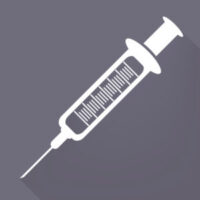Provincial Snapshot: Mental Health and Addiction Treatment in Quebec
This month’s Provincial Snapshot will take an all encompassing look at accessing mental health, drug rehab, alcohol treatment, and addiction treatment in Quebec, and the policies underpinning these services. In months past we have split this into two blogs. However, we are unfortunately all Anglophones in the office so the resources available to us are limited and we are unable to go into depth about the government policies on mental health and addiction treatment in Quebec. Luckily, we will be linking to helpful provincial government websites that provide French language mental health and addiction treatment information. How to Access Mental Health and Addiction Treatment in Quebec A good starting point to finding drug and alcohol treatment programs in Quebec, is right here on this website. Just browse the navigation for “Quebec.” There you will find the link to access public resources in Quebec for alcohol treatment, drug rehabilitation, other addiction and substance abuse resources, as well as helpline phone numbers. Select your health region here from the provincial government’s website to get resources that are close to you. Once in your home region’s webpage you will see Ressources publiques and Ressources privées ou communautaires certifées. Similar to the other provinces covered so far, to get access to public services you must first be assessed and referred. Under Ressources publiques will be a listing for your closest mental health and addiction outpatient office. Some of these offices provide treatment right on site, and others will refer you on. Underneath that first important public resource will be Ressources privées ou communautaires certifées, a list of private and/or community resources. In Quebec the government certifies all healthcare providers so even though it may be a private clinic, you will know it has been verified by the government first. All kinds of services are listed here from public detox to private residential treatment. If you need more help navigating the options available to you, contact our specialist here. Provincial Government Mental Health and Addiction Treatment Policies In 2015 Quebec released their latest 5 year mental health action plan. The 2005-2010 Action Plan led to the development and implementation of the CSSS network, responsible for first line mental health services. The 2015-2020 Action Plan is designed to reinforce these changes while improving practices and service response times. The four main components of the current Action Plan are: respect the rights of people with mental health problems; tailor care and services to young people as they move from childhood to adulthood; improve care through clinical and management practice developments; continuous improvement of quality and delivery of mental health care. References: Quebec Alcohol and Drug Information and Referral List of Health Regions Faire Ensemble et Autrement: The New 2015-2020 Mental Health Action Plan JMC: 2018.04.26 The post Provincial Snapshot: Mental Health and Addiction Treatment in Quebec appeared first on Canada Drug...
Federal Prisons to Begin Needle-Exchange Program
Correctional Services Canada (CSC) announced this week they will be launching a needle-exchange program at two federal penitentiaries this June, with plans for a national roll-out beginning next year. This decision has both critics and proponents. Numerous harm reduction organizations have been calling for clean needles for prisoners for years, while the union representing correctional officers say it condones illicit drug use and endangers officers. Harm Reduction organizations like the Canadian HIV and AIDS Legal Network joined forces to launch a constitutional challenge against the Canadian government in 2012 over this issue. Director of research and advocacy, Sandra Ka Hon Chu, said that CSC is violating prisoners’ Charter Rights by denying them access to sterile injection equipment and allowing the spread of diseases like HIV and Hepatitis C. HIV rates of incarcerated people are 6 times higher than the national average. People who use injection drugs while incarcerated will use regardless if there are clean needles. Therefore, CSC is not encouraging the use of drugs by implementing a needle-exchange program, but making both the users and other prisoners and staff safer by preventing the spread of disease. The president of the Union of Canadian Correctional Officers said he was “baffled” by the announcement which he believes condones drug use within prison walls, and puts weapons in the hands of inmates. However, this needle-exchange program is being modeled after other programs that are already in place and are doing well. Prisoners who have Epipens or who are insulin dependent already use needles onsite and a spokesperson for the CSC said this has also prepared guards for how a safe needle exchange would work. The CSC also looked at research from the United Nations Office on Drug and Crime that showed needle-exchange programs like the one suggested are not associated with increased attacks on staff or prisoners. Next month Canada Drug Rehab will be doing a profile on harm reduction in Canada where you can learn more about this approach to drug policy. References: Federal Prisons to Offer Clean Needles to Injection-Drug Users A Tough-On-Drugs Stance in the Canadian Prison System Harms Prisoners The post Federal Prisons to Begin Needle-Exchange Program appeared first on Canada Drug...
The Evolution of Addiction Models: How Drug Rehab and Alcohol Treatment Program Thinking in Canada has Evolved
Introduction The twentieth century saw serious scientific inquiry into addiction and addictive behaviours. The two main addiction models that sprang forth from the discourse are contradictory, and new theories are bringing us closer to a middle ground. These two models were the moral model and the disease model. In response to the pervading idea of sinful addicts, the ‘disease of addiction’ came about which removed the burden of blame from the substance user. However as the field of addiction increases, more models have sprung forth as well as studies on their effectiveness. Following an overview of historical models, we will discuss the newest evolution of addiction models. Moral Model In the 18th and early 19th centuries addiction was seen as a moral affliction, and that alcohol or drug users had poor character. These people were jailed or sent to mental hospitals with no real care. This moral failing was often strongly tied with sin and they were considered spiritually fallen. Disease Model The 12 step model of treating addiction, as created and dispersed by Alcoholics Anonymous (AA) was founded in 1935 by Bill Wilson and Dr Robert Smith. This was based on the disease model, stating that addicted people have no control over the substance and its addictive powers. A key part of the disease model is that it is irreversible, and because it cannot be cured, lifelong abstinence is necessary. Psycho-Dynamic Model In the early 20th century Sigmund Freud was developing his own theory, one that still informs modern psychology today; the concept that traumas from childhood go on to inform our adult decisions and coping mechanisms. Many clinicians use this theory in counseling to determine if present difficulties are predicated by childhood experiences. Social Learning Model For most of the 20th century, substance use was thought of as strictly a physical dependence and associated physical withdrawals. In the 1970s the narrative shifted to considering that a person’s drug use was informed not just by the drug’s physical effects but also by behavioural and societal factors, as well as the actual “high” of the drug. This model suggests dependence is a learned behaviour, as well as a normal facet of human behaviour which is only problematic when someone experiences negative consequences of their drug use yet continues to use. Socio-Cultural Model A model that has gained traction in the last 20 years, it builds upon the social learning model by viewing society itself as a factor in making certain demographics more at risk for drug abuse. Therefore, the solutions in this model are larger scope and look at ways to alleviate poverty and discrimination. Drug rehabilitation and alcohol treatment in Canada has been heavily influenced by all these various models of addiction through the years. The Modern Take on Addiction Models Today, neuroscientists and psychologists are realising that the brain disease model ignores important factors in addiction. Namely that there is a level of choice involved in taking drugs, that people respond to incentives, and that there are usually underlying social or mental health reasons for beginning drug use. This new outlook combines almost all of the models proposed over the years. Most Canadians know at least one person in their life who used to have problems with drugs or alcohol but chose to change their life. A true disease, like cancer, gives no choice to the person to have the disease or not. “Addiction and the Brain-Disease Fallacy” uses examples of addicts recovering without medicinal help to disprove the disease model. Substance users who respond to incentives like not losing their job/family/home and are able to...
Tobacco Facts: Drug Fact Sheet on Tobacco
Early History Tobacco is a plant native to the Americas, and it is believed to have been first used in society around 1 BC. Indigenous North Americans used tobacco for both religious and medicinal purposes. In the late 15th and early 16th centuries when Europeans went to the Americas, tobacco was used in trade and was taken back to Europe to grow. Tobacco became popular and by the 18th century, companies were being established in America to process tobacco into cigars and snuff. Early 19th century scientists discovered the chemical nicotine and concluded it was indeed dangerous. However, this did not stop the growing popularity of tobacco. During the First World War cigarettes became known as the ‘soldier’s smoke’. Multiple tobacco companies vying for customers began to market specifically men’s cigarettes, and women’s cigarettes, with smoking rates in female teenagers tripling between 1925 and 1935. Health Risks Revealed The pinnacle of the tobacco industry’s power seems to be during the Second World War when cigarettes were included as rations, and after receiving them free in the war, soldiers returning home were hooked. Tobacco’s associated health concerns were finally discovered in the 1950s, and with the 1964 Surgeon General’s “Smoking and Health” report, its time was coming to a close. In the latter half of the 20th century, government regulations on tobacco advertising contributed to the dramatic reduction of smokers in places like the USA, UK, Canada, and Australia. However, it must be noted that just because Westerners have seen a substantial change, does not mean that tobacco companies have faded to the background. These companies have vastly expanded in poorer and less educated areas of the world like parts of Asia and continue to advertise and hook young people for life. It is also in these poorer countries that young child workers can develop ‘green tobacco sickness’ from picking wet tobacco leaves. Current Tobacco Consumption Statistics The World Health Organization (WHO) estimates that tobacco kills more than 7 million people annually worldwide. Almost a million of those deaths are non-smokers who succumb to the effects of second-hand smoke. The National Institute for Health (NIH) in the USA estimates that without the widespread scientific information on how harmful tobacco is, there would be 80 million American smokers instead of 45 million. Cigarette smoking is still the greatest preventable cause of premature death in the USA, accounting for 1 out of every 5 deaths, 87% of lung cancer deaths, and 30% of all cancer deaths. Both WHO and NIH credit bold public health campaigns for the dramatic reduction in new smokers, and the rise of current smokers quitting. Modern Treatment There are many approaches to recovery from nicotine addiction. Behavioural changes in combination with medication therapies can help smokers develop alternate strategies to manage stress and cravings. Nicotine is powerfully addictive however, and so up to 80% of smokers who try to quit will relapse within 6 months. This is especially true of people with mental illness or other addictions. These people purchase almost half of all cigarettes in the USA. 80% of people with alcohol issues, and 90% of people with schizophrenia smoke. There are many over the counter medications that help with nicotine cravings, as well support groups, and even apps for your phone. Later this month to celebrate World No Tobacco Day there will be a blog post about the best apps to help kick the sticks. If you or someone you know smokes and has another substance use issue, please contact our specialist who can help find a dual treatment option. References: WHO: Tobacco...
Health Canada Announces Warning Labels for Opioid Prescriptions
Health Canada announced plans last week to have all opioid prescriptions be accompanied by awareness stickers and leaflets to inform Canadians of the risks associated with opioids. Opioids are pain relievers that include oxycodone, morphine, fentanyl, and codeine among others. Many Canadians will be prescribed an opioid pain reliever for things like broken bones and surgeries. However, many will also be prescribed these drugs for ongoing chronic pain conditions, which is one of the ways people can develop a dependence without realizing. This October is the expected roll out date for Health Canada’s new regulations. The new changes are: Opioid prescriptions will come with a yellow, rectangular warning label that says “Opioids can cause DEPENDENCE, ADDICTION and OVERDOSE”. A one-page handout with concise and consistent information on the risks of overdoses will be given to the patient every time they refill their prescription. Pharmaceutical companies will be responsible for creating risk-management plans Sample sticker from Health Canada These changes are being hailed by doctors across the country as beneficial in promoting dialogue between healthcare professionals and their patients. However, some doctors are hoping that provincial or federal regulating bodies will create their own risk-management plans. Dr Abhimanyu Sud, director of the Safer Opioid Prescribing Program in Toronto, believes the development and delivery of these risk-management plans should be done by the government to avoid the vested interests of drug companies who are primarily concerned with profits. Alberta’s College of Pharmacists is already developing their own opioid information pamphlet that will be distributed across the province’s pharmacies. However, the hope is that these conversations will start in the doctor’s office when initially prescribing, rather than waiting until the patient is already on the opioid medication. If you are on a opioid prescriptions and are wanting to come off, call our specialist to see what drug rehabs accept opioid-dependent clients. References: Health Canada’s Prescription Opioid Stickers and Leaflets get a Qualified Welcome The post Health Canada Announces Warning Labels for Opioid Prescriptions appeared first on Canada Drug...







